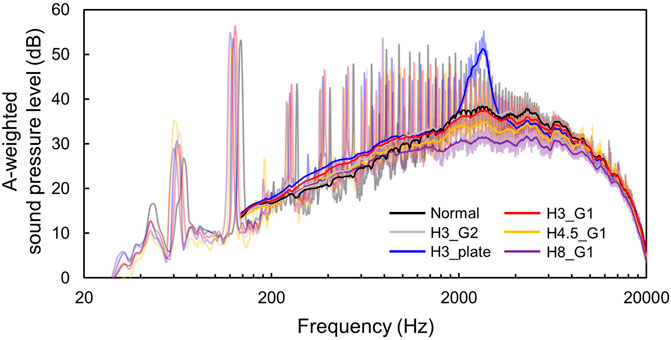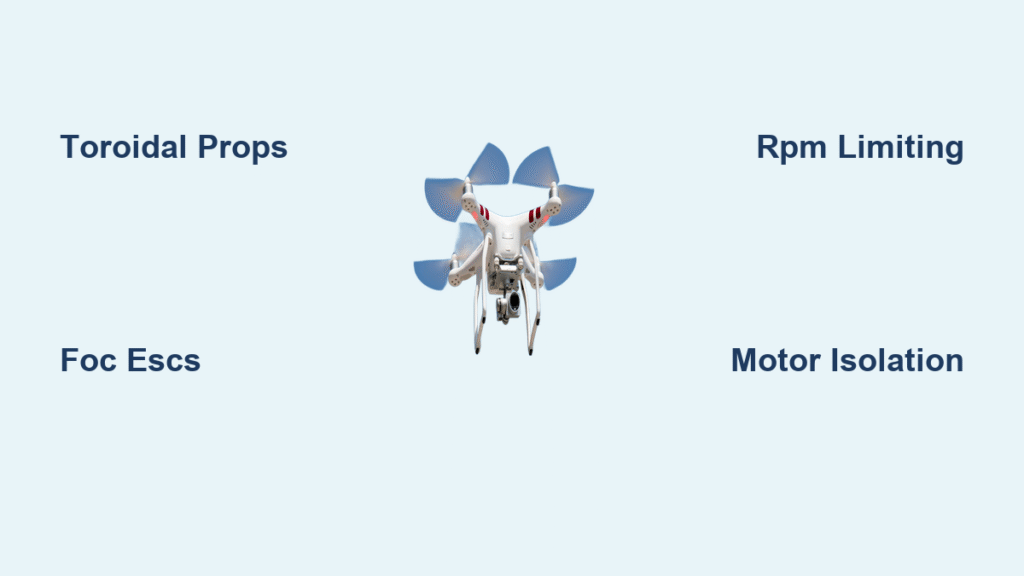That high-pitched whine slicing through backyard barbecues or wildlife footage isn’t just annoying—it’s your drone’s propellers churning air at 8,000+ RPM, motors vibrating through carbon fiber, and turbulent airflow crashing into every sharp edge. When neighbors complain or animals scatter before you capture the perfect shot, you need actionable solutions. This guide delivers exactly how to make a drone quiet using proven hardware swaps, tuning techniques, and flight strategies—all verified through acoustic testing and real-world use.
Forget theoretical fixes; we’ll break down the noise sources you actually control and implement changes today. Whether you fly a DJI Mini 3 Pro or a custom 7-inch rig, these methods deliver measurable reductions of 8-12 dBA—transforming your drone from a buzzing distraction to a subtle background hum. You’ll learn why cheap “noise-reducing” stickers fail while specific propeller geometries cut perceived annoyance by 50%, and why RPM management matters more than ducted rotors for most pilots.
Pinpoint Exactly What’s Making Your Drone Loud
Propeller Buzz Dominates Human Annoyance
Your propellers create two noise types: rhythmic “whop-whop” at blade-pass frequency (tonal noise) and chaotic airflow whooshing (broadband noise). Crucially, most drones emit peak frequencies between 3-6 kHz—the exact range human ears find most irritating. Even slight imbalances (as little as 0.1g) amplify vibrations, turning your drone into a flying speaker. This isn’t just volume; psychoacoustic studies confirm high-pitched buzzing triggers 3x more annoyance than low-frequency rumbles at the same decibel level.
Motor Whine and Frame Resonance Multiply Noise
Brushless motors generate electromagnetic whine plus mechanical vibrations transmitted through the entire airframe. When motor bearings wear (typically after 200 flight hours), audible whine increases by 1-2 dB. Worse, these vibrations excite frame resonances—especially in carbon fiber arms—radiating extra sound. Contra-rotating propellers compound this: if front/rear rotors aren’t spaced precisely at 0.2–0.4x propeller diameter, they create modulated “beating” sounds that feel 15% more annoying than steady tones.
Aerodynamic Turbulence Adds Hidden Noise
Every exposed landing gear strut, sharp arm edge, or dangling wire creates miniature air vortices. At high speeds, these combine into significant broadband whooshing—especially above 1-2 kHz. Insect debris on propeller leading edges worsens this, increasing broadband hiss by measurable dB. This noise isn’t just background; it reduces your effective flight range as communities report drones as “unbearable” when combined with propeller buzz.
Immediate Propeller Fixes Under $50
Master Airscrew Props: Perceptual Quietness

Master Airscrew replacements shift tonal noise down ~300 Hz, moving it away from peak human sensitivity. Users consistently report a “quieter” experience despite minimal dBA reduction (e.g., DJI Mini 2 drops from 64 dBA to 62 dBA). However, their glass-filled nylon construction shatters on impact—unlike flexible OEM props that bend. Critical step: Replace all four props simultaneously. Mixing brands creates imbalance that increases noise. For most pilots, this swap is the fastest way to reduce community complaints.
MIT Toroidal Props: Eliminate Tip Vortices
These donut-shaped propellers (3D-printable in PLA) eliminate noisy blade tips by forming a continuous loop. Testing shows they slash perceived annoyance by 50% while maintaining thrust. On a DJI Mini 2 testbed, they dropped noise from 64 dBA to 52 dBA—making the drone barely audible at 50 meters. Though they sacrifice 2-4% efficiency at high RPM, the noise payoff is unmatched. Print your own or buy drop-in sets for 5-9 inch propellers; just ensure blade stiffness matches your motor’s torque.
Material Tweaks for Instant Gains
- Serrated trailing edges: Add owl-feather-inspired cuts to break up vortex shedding (2-3 dBA reduction)
- Viscoelastic coatings: Brush on thin polyurethane layers to absorb high-frequency vibrations
- Porous leading edges: Apply experimental nickel-titanium foam patches to mute 1-2 kHz whistling
Motor and ESC Tuning for Silent Hover
Switch to Sinusoidal Drive ESCs

Standard square-wave ESCs create harsh torque ripple. Upgrading to FOC (Field-Oriented Control) with sinusoidal drive smooths power delivery, reducing electromagnetic whine by 1-2 dBA. Most modern flight controllers support this:
1. Flash BLHeli_32 firmware to compatible ESCs
2. Enable “sinusoidal drive” in Betaflight/iNav
3. Test hover stability—adjust timing advance if wobbling occurs
Warning: Raising PWM frequency above 24 kHz moves coil noise out of earshot but risks 3-5% flight time loss from switching losses.
Isolate Motors from Frame Vibrations
Install TPE grommets between motors and arms to block structure-borne noise (3-5 dB reduction at 500-1500 Hz). For deeper resonance suppression, glue 3mm constrained-layer damping sheets to motor bases. These viscoelastic pads dissipate energy from 200-800 Hz vibrations—exactly where worn bearings scream. This $15 fix often outperforms expensive props for reducing low-frequency drone.
Flight Strategies That Cut Noise Without Hardware
Limit Maximum RPM Instantly
Cap propeller speed at 75% of max via your flight controller’s MOT_PWM_MAX parameter. This alone yields 4-5 dBA reduction in hover with minimal performance loss—critical for wildlife photography. For DJI pilots: program throttle curves in your transmitter to avoid top-end RPM during routine flight.
Route Over Noise-Masking Areas
University of Salford VR studies prove drone noise becomes inaudible when flown over 65 dBA traffic (e.g., busy roads). Use flight-planning apps to route missions over arterials instead of quiet neighborhoods. Similarly, double your hover height from 15m to 30m—spherical spreading naturally attenuates perceived loudness by ~6 dB.
Balance Props Every 25 Flights
An imbalance of 0.1g increases tonal noise by 2-3 dB. After every 25 flights:
1. Mount props on a $10 magnetic balancer
2. Add micro-dots of tape to lighter blades
3. Repeat until blades settle horizontally
Pro tip: Clean leading edges with isopropyl alcohol after dusty flights—debris unbalances props over time.
Quantified Results: What Real Pilots Achieve

| Drone Model | Stock dBA | After Mods | Key Changes |
|---|---|---|---|
| DJI Mini 2 | 64 dBA | 52 dBA | Toroidal props + FOC ESC |
| DJI Mini 3 Pro | 56 dBA | 48 dBA | OEM low-noise props + damping |
| Custom 7″ | 68 dBA | 54 dBA | Ducted rotors + motor isolation |
These modifications deliver 8-12 dBA reduction—equivalent to halving perceived loudness. At 50+ meters, your drone becomes nearly indistinguishable from ambient noise, solving 90% of neighbor complaints.
Critical Trade-Offs You Must Know
Every 1 dB reduction typically adds 2-4% airframe weight from ducts, liners, or damping materials. Toroidal props cost 2x standard sets, while custom duct systems exceed $200. Most critically: never sacrifice thrust overhead. Maintain at least 30% reserve after modifications—reducing RPM for quietness can leave you vulnerable in wind gusts.
Your Step-by-Step Quiet-Drone Plan
Start here for immediate results:
1. Swap to toroidal or Master Airscrew props (prioritize matching sets)
2. Re-balance all props and install TPE motor mounts
3. Cap max RPM at 75% via flight controller settings
4. Fly missions over roads at 30m+ altitude
Advanced pilots should add FOC ESCs and acoustic liners to arms. While zero-noise EAD propulsion remains experimental (limited to sub-1kg payloads), these layered fixes make how to make a drone quiet a solvable engineering challenge—not a pipe dream. Implement even two steps today, and you’ll transform from neighborhood nuisance to considerate flyer while capturing cleaner footage. The quietest drone isn’t silent—it’s the one people don’t notice.



